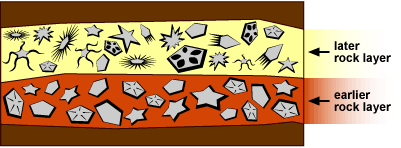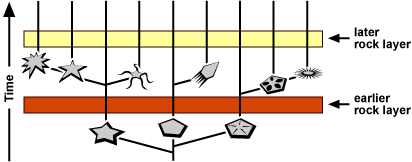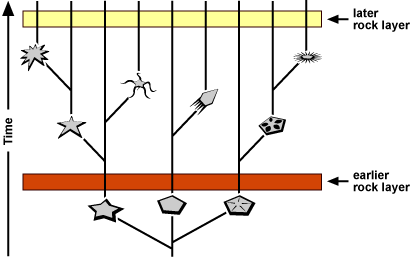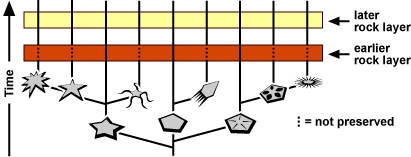You might think that describing the “what happened when” of macroevolutionary change would be easy to do. But it isn’t so easy when you’re dealing with events long past, and a history that we didn’t observe and that can’t be repeated. For example, imagine a paleontologist examining fossils from the two adjacent rock layers pictured below. In the earlier rock layer, there are only a couple of early echinoderms (the clade containing starfish and sea urchins). In the later rock layer there are many echinoderm species with quite distinct body forms. These rock layers present snapshots of life through time, and our job is to fill in what happened between the snapshots.

Any one of the following scenarios is consistent with the evidence in the series of snapshots.
1. The lineage experienced a sudden burst of speciation and morphological change:
2. The lineage experienced slow and steady speciation and morphological change:
3. The lineage did not experience much speciation or morphological change during this time period. Most of the echinoderms from the later rock layer were living at the time that the earlier rock layer was laid down — but they didn’t get preserved. Perhaps, the “new” echinoderm species were living in a different geographic area when the earlier rock layer was laid down, migrated into the area, and then happened to get preserved in the later rock layer:
Figuring out the real story behind the fossil pattern is the sort of problem that keeps paleontologists up all night!
Teach your students about interpreting evidence relevant to macroevolution: Visualizing life on Earth: Data interpretation in evolution, a web activity for grades 9-12.



